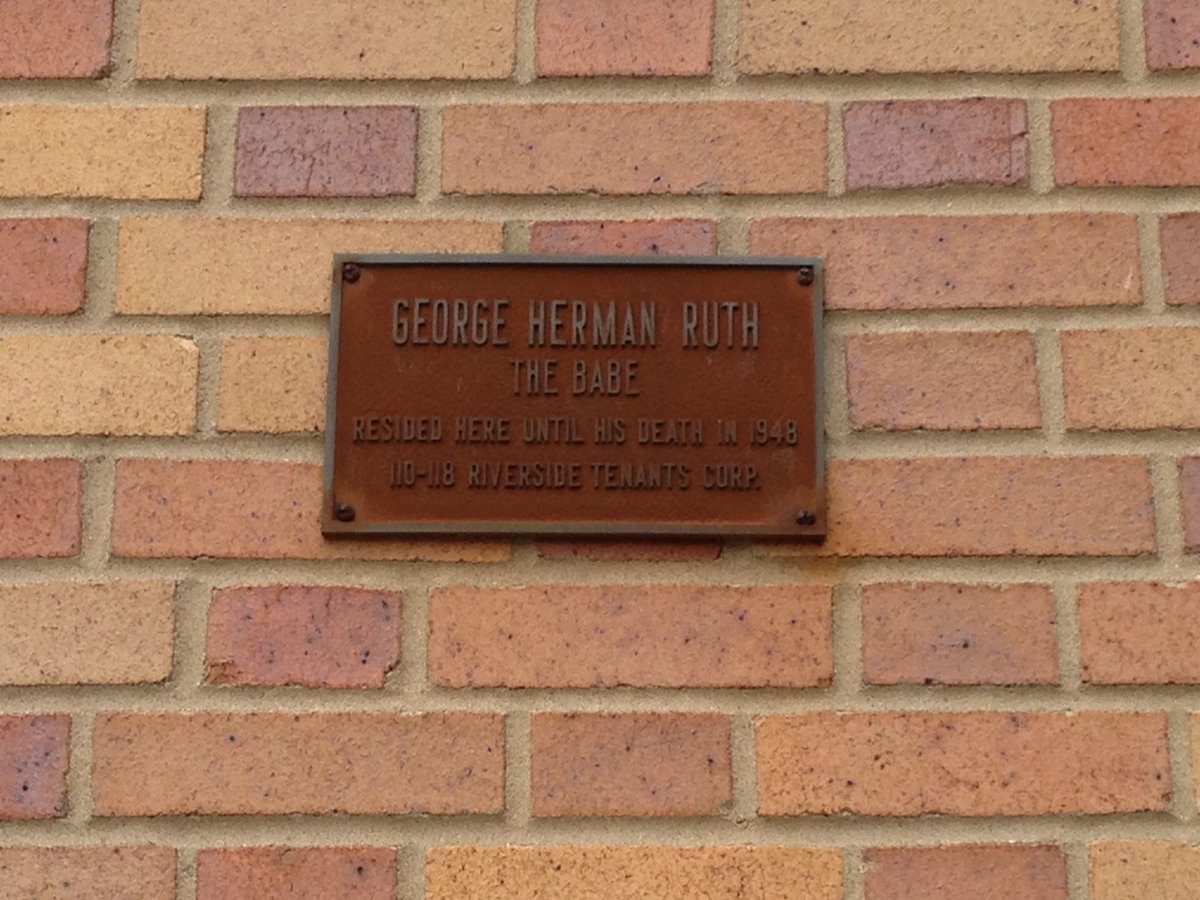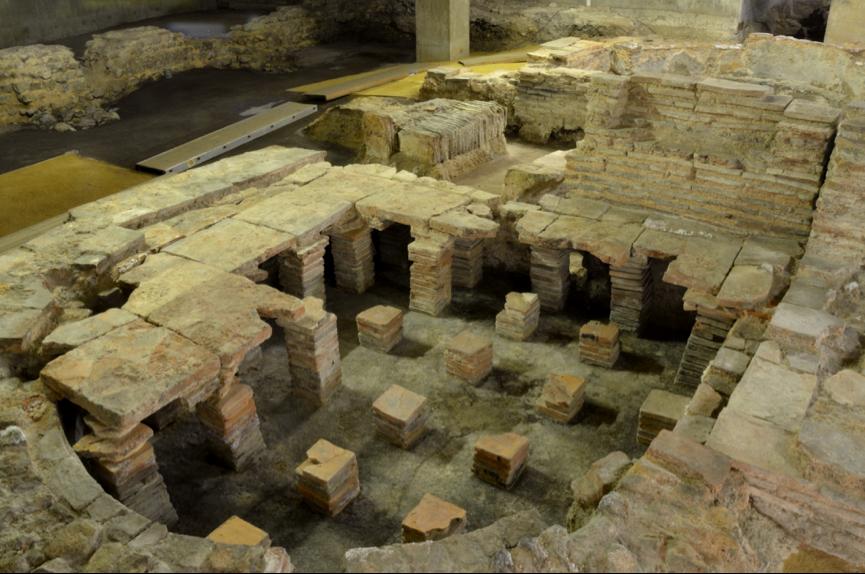My Blog for All Things Nerdy, including "The Wrong Sword," "Conjure Man," and "Hero's Army."
Wednesday, December 25, 2019
Monday, December 23, 2019
New York Photo Notes
1. In New York, even the bathrooms are cinematic.
2. Sometimes, we live outside in.
3. Even if you don't have a Christmas tree, you have a Christmas tree.
4. Shabby/ornate is what the city's about - but gentrification is erasing that like sea rise on Miami Beach.
And here's hoping you don't feel attacked when I say...
Happy Holidays!
2. Sometimes, we live outside in.
3. Even if you don't have a Christmas tree, you have a Christmas tree.
4. Shabby/ornate is what the city's about - but gentrification is erasing that like sea rise on Miami Beach.
And here's hoping you don't feel attacked when I say...
Happy Holidays!
Sunday, December 15, 2019
I Love New York
Actually, I don't. No New Yorker does. It's like loving your blood type.
But I will admit that this city does offer the occasional compensation for the noise, the jerks, the crowds, and the expense.
I'm typing this from the reading room of a discreet midtown hotel that was once home to a famous Jazz Age writer, a five minute walk from the Algonquin Round Table. I'm surrounded by wood panelling and leather chairs, and there's a cappuccino machine bubbling away in the back. The streets outside are packed, but there's a murmuring silence here, and I have the room completely to myself...
But I will admit that this city does offer the occasional compensation for the noise, the jerks, the crowds, and the expense.
I'm typing this from the reading room of a discreet midtown hotel that was once home to a famous Jazz Age writer, a five minute walk from the Algonquin Round Table. I'm surrounded by wood panelling and leather chairs, and there's a cappuccino machine bubbling away in the back. The streets outside are packed, but there's a murmuring silence here, and I have the room completely to myself...
Sunday, November 3, 2019
The Exile Returns to New York - WIP Chunk #2
She took my hand with one almost as grimy and led me to the forward bay, where they let us mingle with the first-class passengers for the landing.
“What is that?” she pointed. “And that? Tell me!”
“We’re flying over…this water is Long Island Sound. On the left, that’s Queens. It’s part of the city. And on the right, that shore, that’s Connecticut.”
“A city?”
“No, uh, una regione. Rich people live there. And now - see those towers, with the round plates on top? Those were from the World’s Fair, in your father’s grandfather’s time. They’re defense wards now. And that big wall across the water, that’s the City Island Sea Gate.” Was I tearing up a little? No. I’m a tough New Yorker, see?
“We’re turning!”
“Yes, south. Look there. Now we’re flying over Manhattan, that has all the fancy tourist stuff.”
“Is that Central Park?”
“No, that’s Fort Tryon. Central Park is coming…”
The exile returns. Yeah, I was getting a little misty. Past the old Lennox Avenue towers, now overgrown like Babylon with 24-story hanging gardens, low over the green promenade of St. Nicholas, soaring above Morningside Heights – hello, 112thSt! – south past the great, perilous expanse of Central Park, then-
“See it? See?”
“Empire State! Empire State!”
“That’s right. Empire State.”
There it was, the good old Empire State Building, standing tall in its cloud of circling ornithopters and flying carpets, the air around it a perpetually gentle spring day thanks to the New York Thaumaturgical Board’s weather team. The spire’s landing light went green, and we docked.
Thursday, October 31, 2019
Happy Horror-ween!
Here's a chunk of my #WIP, which I hope is appropriately dark...
****
I stepped inside and swayed. I wanted to hold my breath, but I knew it wouldn’t help. The salty bowel reek of Corruption drifted on the breeze, the product of decades of misery and cruelty and willful blindness. Tonight’s festivities would just frost the cake.
The guests drifted down the crumbling hallway, stepping over years of dead leaves and soil, plaster and broken brick, to an enormous hexagonal atrium with a spiral staircase in the center. I felt wards and sinks under my feet, working overtime to drain away the bad mojo and stop anyone with the power from doing something unwise. Dance music boomed from behind the staircase; in front of it was a low platform lit by spotlights. A magic circle had been laid out around the platform in silver wire, and signs in yellow chalk were scrawled all over the platform itself. I tried to read them, and shuddered. Some looked like gibberish; others were versions of the Angels’ Letters, deformed to facilitate the ritual. The atrium floor might have been a dead zone, but the platform was active – and sick.
A DJ’s voice boomed out. “First come, first come, here it is.”
The lighting shifted to purples and blues, the music became a loud breakbeat, and a quartet swaggered onto the platform like a boxer and his cornermen. But here it was two truck-sized goons in shiny suits, followed by a man in a monk’s robe, and flanking a scrawny boy who looked like a Goth groupie in a long black shift, pallid skin, and teased black hair. The audience applauded and he stared back defiantly before spreading his arms. The goons grabbed his shift and tore it from him, leaving him naked. The crowd didn’t applaud that. They weren’t here for burlesque.
He was tattooed, and his nipples and penis were pierced. The goons removed the metal swiftly. He didn’t flinch. Then the robed man raised his hand and muttered, and the goons held the Goth’s arms. The boy whimpered and cried out as the tattoo ink leeched from the skin of his arms, feet, and torso, and dripped to the floor.
Once the ink was gone, the goons let him sag into the heavy iron chair at the platform’s center. His eyes were closed and he was breathing deeply as the goons strapped him in. The pseudo-monk produced a pot and a whisker brush from inside his robe and drew signs on the boy’s forehead, chest, and belly in black ink.
Fake Monk stepped back and spread his arms and invoked…something. It was almost the Tongue of the Gate he used, but blurred and distorted, with different accents and rhythms.
That fast, Something was in the hall with us humans. Magus or not, you felt it – I could see it on the faces of Vic and my dad and the crowd around us. A presence huge, and inhuman, and…eager.
It reminded me, a little, of the Mayor of the Second Palace. There was that sense of cosmic distance. But the Mayor had drawn near to humanity like a dolphin in the surf; it had worn our face, out of affection. This thing was from no sunlit bay. It came from the abyss outside the Created Worlds, alien as a sea spider. I couldn’t know its purpose, but I knew it should have had nothing to do with Man.
The presence filled the hall, waiting for the chance to manifest. Fake Monk slammed his hands together, mouthing a single word, and Goth Boy screamed.
For half a second.
Then he rose from the chair, supple and graceful as an octopus in deepest water. His eyes were pure black. His arms reached out, returned, played bonelessly over his legs, his crotch, his torso.
“Ask me,” came the voice of the Presence. “Ask me anything.” The words had the lilt of an FM deejay, but the overtones were the inhuman warbles and moans you hear from deep-space radio objects.
The crowd went wild.
The guests crowded up to the line of silver. I worried for a moment that they would break the circle and release the thing, but instead they spread against an invisible wall like a horde of mimes.
“Let me talk to my dad!”
“What will the Exchanges be tomorrow?”
“Where is the Green Knight of Eris?”
“Who is the Ruined Child?”
One by one, the thing in the boy’s body would point to a guest. The guest would approach, and they would speak to each other. The words would sound like English, but no one could understand them but the Thing and the guest. Then the Thing would smile and the guest would step back, looking suddenly frail and frightened and old…and another guest would ignore that look and step forward in the first one’s place.
With each guest that stepped up, the stink in the room got a little worse. With each question, Goth Boy grew weaker. His pallor shaded to snow white. Green-black veins appeared in his arms, his cheeks.
“We could stop this right now,” said my father, meditatively. “We could leave the device and go. It would be worth it.”
“Dad? What device?“
“Focus, sir,” said Vic. “It’s only for emergencies.”
“I know. I know.”
“Dad-“
“Later,” said Vic. “Let’s spy. That’s why we’re here.”
On the platform, Goth Boy shuddered and collapsed, black bile dripping from his mouth. He twitched as the two goons hauled him upright, wrapped him in a survival blanket, and broke the circle.
The Presence was gone.
The crowd applauded wildly and the music started again. Fake Monk stayed on the platform, stretching like a wrestler between bouts. I picked my way carefully around the room, through the alcoves, past the pillars and doors, listening hard.
Friday, October 18, 2019
A Little Experiment
I'm a member of BSFW, one of the best damned spec-fic writers groups anywhere. I've been providing some content for their Twitter feed, and maybe, just maybe, it might be useful to you blog readers. Let's read, shall we?
Today, a writing tip about finding material to inspire you: Don't get locked into the familiar.
1. For instance, if you live in North America or the British Commonwealth, see what's happening elsewhere. Not just events and histories, but what people are writing.
2. Reexamine things you thought were "dead ends." If you look closer, they might inspire you. For decades, historians wrote off the Byzantine Empire because they thought its influence simply stopped at the Ottoman takeover. Now, they're reevaluating it, and it's a fascinating source of material for writers.
Hell, even the Burgess Shale might give you something... https://smithsonianmag.com/history/burgess-shales-weird-wonders-36404411/…

3. In archaeology, absence of evidence isn't evidence of absence. Not every civilization builds in stone and iron. Look past the civilizations you can see to the ones you can't.
https://en.wikipedia.org/wiki/Mound_Builders…

4. Be aware of the gaps in our knowledge. We've been Homo Sapiens for more than 200,000 years; but our written history begins only 5,000 years ago. What happened before? https://en.wikipedia.org/wiki/History


4. Be aware of the gaps in our knowledge. We've been Homo Sapiens for more than 200,000 years; but our written history begins only 5,000 years ago. What happened before? https://en.wikipedia.org/wiki/History

If you're feeling uninspired, look where you didn't look before.
Labels:
archeology,
Byzantium,
commentary,
fantasy,
history,
inspiration,
prehistory,
source material,
writing tips
Thursday, May 16, 2019
Imagine There's Religion...
Time for another thread on worldbuilding in fantasy and science fiction. And oh my gods, this time it's about religion! [But religion in writing, not worship. No value judgments.]
1. Universal vs. ethnic religions. A universal religion is one that claims it applies to all people
everywhere - like Christianity, Islam, or Buddhism. An ethnic religion is the religion of a specific group of people - like Alawites, Jews, or the Japanese [Shinto]. Sometimes one kind of religion can evolve into the other.
For instance, syncretic religions like Voudoun and Lucumi [Santeria] combine aspects of Roman Catholicism with West African [esp. Yoruba] religion. Bahai'ism does not consider itself to be syncretic, but some religious scholars think it is. Some scholars make the case that Christianity is a syncretic religion, combining Hebraic elements with Hellenistic ideas of a god who dies and is reborn and is consumed, like Zagreus or Attis.
Polytheistic religions are often ethnic ones, but that's fuzzy too. Gods can be adopted, abandoned,
even created. The Romans were famous for importing gods from other cultures, and discarding ones they considered scandalous. They even made Julius and Augustus Caesar into gods postmortem, and deified the city of Rome itself. They also adopted Greek gods and identified them with Roman ones.
Religion are important - they influence worldview, education, and personality. So what kind of religions do you want in your worldbuilding?
 |
| Shinto shrine |
everywhere - like Christianity, Islam, or Buddhism. An ethnic religion is the religion of a specific group of people - like Alawites, Jews, or the Japanese [Shinto]. Sometimes one kind of religion can evolve into the other.
Universal religions often have an imperative to proselytize. This can be anything from publishing tracts to LDS missionaries knocking on your door at 8:00 AM all the way to inquisitions and holy wars. Ethnic religions...not so much, although there are exceptions.
2. Syncretic vs. discrete religions. A discrete religion is one that seems to have only one source. If it has more than one, those others are lost in time. Syncretic religions have combined and drawn inspiration from several faiths that have come before.
 |
| Shrine to Oshun [Lukumi] |
Important: Syncretic or discrete is not a value judgment; it doesn't reflect on the truth or authenticity of the faith.
3. Polytheistic vs. monotheistic religions. This distinction is fuzzier than it looks. For instance, a polytheistic religion may consider its pantheon to be different aspects of a single ultimate deity.
 |
| Pantheon of Rome |
even created. The Romans were famous for importing gods from other cultures, and discarding ones they considered scandalous. They even made Julius and Augustus Caesar into gods postmortem, and deified the city of Rome itself. They also adopted Greek gods and identified them with Roman ones.
People can think of gods - and saints, and orishas, and loa - as mascots. A Catholic might wear a St. Anthony medal just as a Santéro might wear the red and white colors of Shango.
4. Mystery Religions/Secret Societies - religions that test applicants before they are accepted, and maintain secrecy about their rites. In the Greco-Roman world, these included the Eleusinian and Mithraic Mysteries. We don't know much about them because they kept their secrets very, very well - but their influence was undeniable.
5. Hierarchical vs. congregational - some religions maintain a hierarchy that determines dogma, chooses priests, and enforces religious law. Other faiths are "bottom up" - local congregations make decisions. Roman Catholicism is hierarchical; Judaism is congregational.
 |
| The Byzantine eagle - the two heads symbolize power over religious and secular affairs |
6. Caesaropapism - the state controls the religious hierarchy. The Emperor of Byzantium was also the head of the Orthodox Church, and Queen Elizabeth is officially the head of the Church of England. With Caesaropapism, universal religions shade closer to ethnic ones.
7. A religion doesn't HAVE to have gods in the traditional sense; or it can have deities that do not require worship. A case can be made that Soviet Marxism was a religion, despite its materialism. Confucianism is focused more on right action in this world than on supernatural questions. Many schools of Buddhism acknowledge the existence of gods, but consider them a distraction from enlightenment.
8. The distinctions between religion, philosophy, and magic are fuzzy.
Treat the worldview of others with respect.
8. The distinctions between religion, philosophy, and magic are fuzzy.
Treat the worldview of others with respect.
Thursday, May 9, 2019
Give Your World Layers!
Civilizations are built in layers. Any town more than a hundred years old will have layers - buildings, customs, and infrastructure of different eras.

Plaques! Another example of world building in layers. If your characters have a sense of history, so will your readers.

Statues. Plaques. Shrines. Cemeteries. Buildings of different eras. Old structures that have been repurposed. All of these will give your city the feeling of life, of a past - and that will be reflected in your characters.
A common practice in pre-industrial societies is to use cut stone from other structures. There are Byzantine and Nabatean stones in the walls of "old quarters" throughout the Middle East.

In London, you can walk past at least one Victorian structure built over an ancient Roman bath

And of course, the excavation of Troy at Hisarlik, in Turkey, revealed the ruins of SEVEN complete cities, built one on top of another.

Layer example 1: In LOTR, the characters live in and travel through dozens of places that are relics of those who came long before: Moria, Weathertop, the Argonath. These convey a sense that Middle Earth is a place with its own history - one that would exist even if the reader wasn't reading about it.
My own novel, "The Wrong Sword," takes place in medieval France. The castles are new, but there also Roman roads and ruins already more than 1,000 years old.
Give your world history.
Wednesday, April 17, 2019
Unexpected Places

It seems that my story, "A Dog Of Wu," [@fandsf March/April 2018]
has been cataloged at libraries for Laredo College in Texas [under "dystopias"] and Universided del Sagrado Corazón in Puerto Rico [under "master-servant relationships"].
Stories are like beach sand. They get everywhere.
Monday, April 15, 2019
Another Human Species
They've found new bones in the Philippines - maybe a new species: Homo Sapiens Luzonenis.
Add it to Homo Sapiens Denisova, Homo Sapiens Floriensis, and Homo Sapiens Naledi.
All recent [geologically speaking] and all...extinct.
We Sapiens Sapiens are the only ones left. The sole survivors. The...murderers???? [Cue terrifying Hitchcockian music]
Add it to Homo Sapiens Denisova, Homo Sapiens Floriensis, and Homo Sapiens Naledi.
All recent [geologically speaking] and all...extinct.
We Sapiens Sapiens are the only ones left. The sole survivors. The...murderers???? [Cue terrifying Hitchcockian music]
Wednesday, April 10, 2019
WARNING!

WARNING: YOU ARE NOT SEEING THE ACTUAL BLACK HOLE.
IF YOU THINK YOU ARE SEEING THE ACTUAL BLACK HOLE, YOU ARE EITHER
1. WRONG
-OR-
2. CAUGHT IN A MOMENT THAT WILL SEEM ETERNAL TO US,
BUT TO YOU WILL BE ONLY AN INSTANT OF AGONY
BEFORE YOUR BODY IS TORN INTO ITS COMPONENT ATOMS.
THANK YOU AND HAVE A HAPPY SINGULARITY.
Tuesday, April 2, 2019
My Back
Ah, back spasm.
We meet again, old comrade, old enemy.
For you I have broken elevator holds.
For you I have swallowed pills.
One day, my back shall be as dust.
What will you do then? Eh?
Victory shall be mine, even as the worms devour my flesh.
We meet again, old comrade, old enemy.
For you I have broken elevator holds.
For you I have swallowed pills.
One day, my back shall be as dust.
What will you do then? Eh?
Victory shall be mine, even as the worms devour my flesh.
Friday, March 29, 2019
Thank You for Your Patience. Let's Talk Rome.
Hey, gang, sorry it's been a while. But life, right? I've been rewriting the second novel, working on a sequel to TWS, working on a couple of short stories, not to mention life stuff with which I shall not bore you...I know, excuses, excuses.
So...I'm still not completely up to speed, but I've got some fun facts about Rome. Rome's cool, right? So let's TIL Rome.
 The Roman legionary camp was essentially a city that they carried with them and then built wherever they needed it. The plan was unvarying and included a market square, a space for sacrifices, and a giant surrounding wall. Every soldier knew where he bunked in that camp - even when the camp didn't yet exist. It was a model in their minds.
The Roman legionary camp was essentially a city that they carried with them and then built wherever they needed it. The plan was unvarying and included a market square, a space for sacrifices, and a giant surrounding wall. Every soldier knew where he bunked in that camp - even when the camp didn't yet exist. It was a model in their minds.
Also, five hundred years after the fall of the Western Empire, and even though their daily language and culture were medieval Greek, the Byzantines referred to themselves as Romans. So did the Muslim world.
Today "All roads lead to Rome" means a lot of different routes can lead to the same place. Originally it wasn't a proverb; it was the literal truth. The Romans were the best road builders the Western world have ever seen to that point, and all their roads - even those as far away as Britain and Turkey - were measured from the "Golden Milestone" set up in Rome's main market. A Roman road was basically a well-built stone wall buried dozens of feet in the earth so travelers could walk on top of it. They're still around.
 Judas may have been called Iscariot because he carried a sica, a curved short sword that was considered dishonorable by Romans. Because it was light, concealable, and made it easy to carve an unarmored opponent, it was considered the weapon of assassins, cutthroats, and domestic terrorists. Iscariot = knifeman. And these days, sicario still has that meaning, kind of.
Judas may have been called Iscariot because he carried a sica, a curved short sword that was considered dishonorable by Romans. Because it was light, concealable, and made it easy to carve an unarmored opponent, it was considered the weapon of assassins, cutthroats, and domestic terrorists. Iscariot = knifeman. And these days, sicario still has that meaning, kind of.
So...I'm still not completely up to speed, but I've got some fun facts about Rome. Rome's cool, right? So let's TIL Rome.
 The Roman legionary camp was essentially a city that they carried with them and then built wherever they needed it. The plan was unvarying and included a market square, a space for sacrifices, and a giant surrounding wall. Every soldier knew where he bunked in that camp - even when the camp didn't yet exist. It was a model in their minds.
The Roman legionary camp was essentially a city that they carried with them and then built wherever they needed it. The plan was unvarying and included a market square, a space for sacrifices, and a giant surrounding wall. Every soldier knew where he bunked in that camp - even when the camp didn't yet exist. It was a model in their minds.Also, five hundred years after the fall of the Western Empire, and even though their daily language and culture were medieval Greek, the Byzantines referred to themselves as Romans. So did the Muslim world.
Today "All roads lead to Rome" means a lot of different routes can lead to the same place. Originally it wasn't a proverb; it was the literal truth. The Romans were the best road builders the Western world have ever seen to that point, and all their roads - even those as far away as Britain and Turkey - were measured from the "Golden Milestone" set up in Rome's main market. A Roman road was basically a well-built stone wall buried dozens of feet in the earth so travelers could walk on top of it. They're still around.
 Judas may have been called Iscariot because he carried a sica, a curved short sword that was considered dishonorable by Romans. Because it was light, concealable, and made it easy to carve an unarmored opponent, it was considered the weapon of assassins, cutthroats, and domestic terrorists. Iscariot = knifeman. And these days, sicario still has that meaning, kind of.
Judas may have been called Iscariot because he carried a sica, a curved short sword that was considered dishonorable by Romans. Because it was light, concealable, and made it easy to carve an unarmored opponent, it was considered the weapon of assassins, cutthroats, and domestic terrorists. Iscariot = knifeman. And these days, sicario still has that meaning, kind of.
There.
Those are things you know now.
Welcome back!
Labels:
arms and armor,
Byzantium,
history,
legion,
military history,
roads,
rome,
sica,
sword,
urban planning
Thursday, January 3, 2019
For Your Consideration: "A Dog of Wu"
"A Dog of Wu" is up for Hugo and Nebula nominations. It appeared in the March/April 2018 issue of The Magazine of Fantasy & Science Fiction. It's a 7k+ word novelette set in a future of genetic optimization, environmental rebuilding, and clashing philosophies.
SFWA members can find it here, and WorldCon members can purchase a copy here.
SFWA members can find it here, and WorldCon members can purchase a copy here.
Subscribe to:
Comments (Atom)










